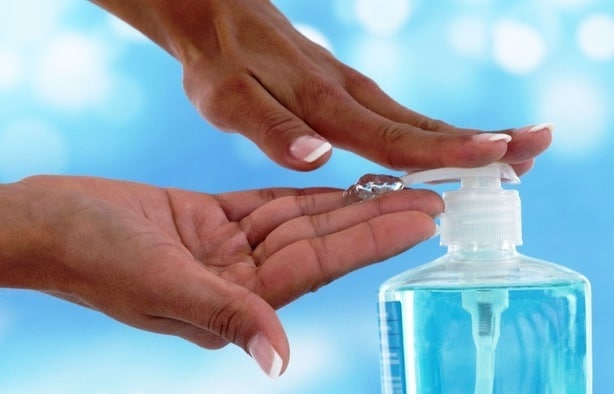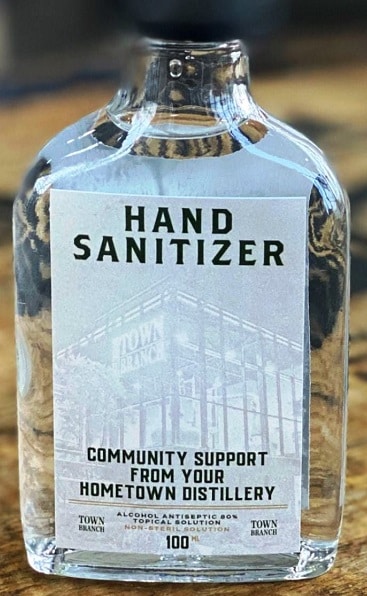We from Hospitality School, are also trying to educate people to fight against this deadly Coronavirus disease. We have decided to publish 2 articles and today is the second one: how to prepare hand sanitizer at home.
Doing something yourself has some benefits, including saving on costs, protecting yourself from contrabands or generic products, or being able to customize the product as you would have liked. Also, there have been concerns about how commercial products and, in this case, hand sanitizers are made. Other than their environmental impact, which out and glaring for all to see, the chemicals that are used for large scale manufacture of goods in factories are with doubt the causative agents of environmental change as well as infections. However, since the assertions have not been proved, let us narrow the discussion to how to prepare hand sanitizers from home either due to your preference or because of an acute shortage brought about by a surge in demand. When the latter happens, the stores will definitely be unable to meet the demand, and hence, the prices will go up, or the shelves will be widely empty. Taking a leaf from the most recent pandemic crisis, the demand for hand sanitizers have shot up globally. This means if you can get them in the store near you, the price is likely to be way above the average.

How does it work?
There are many methods that are devised that you can use to make your own hand sanitizer. However, the most appropriate ones to fight viruses such as the causes of Covid-19 are made using concentrated alcohol compounds. Consequently, not all types of alcohol are suitable for the manufacture of this product. Methanol Butanol Pentanol and others are very toxic; hence, they should never be used in the process. However, you can use isopropyl alcohol and ethanol. Isopropyl alcohol is commonly known as rubbing alcohol and ethanol; well, it depends on where you get it from, but it is widely known as grain alcohol or most chemical stores just brand it as ethanol. Lastly, you need to ensure that the alcohol content is more than 90%. A lesser content reduces the effectiveness of the product.
Furthermore, you can mix two or more compounds to alcohol to improve its efficiency. To protect yourself and your family from germs, it is recommended to use some known antimicrobial compounds such as clove oil and thyme. Here, you might want to go slow on the quantity since they are known to be very corrosive and may easily irritate your skin. Also, chamomile oil or lavender may be used to soothe your skin. Afterward, you will need a perfect fragrance for your taste.
How to prepare
Equipment: funnel, bowl and spoon, a bottle with a pump dispenser
Ingredients: 2/3 cupful of 99% of isopropyl or ethanol, 1/3 cupful of aloe Vera gel, 8-10 drops of essential oil.
Steps
- Collect your ingredients and ensure you followed the steps carefully about the precautions. Also, ensure the alcohol you use has the highest alcohol content. Isopropyl has a 99.9% unless if diluted.
- Add all the ingredients in one bowl. Using a spoon, mix them thoroughly.
- Using a sieve, carefully empty the contents of the bowl into the pump dispenser bottle. Screw the cap back on the bottle. What you have is a homemade hand sanitizer.
- As you can see, the process is not as complicated as one may think. In fact, it is a three-step process that you otherwise would not need direction.
- Furthermore, as pointed out earlier, people will prefer different fragrances in their sanitizer solutions. This part will, however, be the difference in all the preparation processes. Alcohol and preferably isopropyl or ethanol remain to be the main components and by far the key ingredient in the preparation of homemade hand sanitizer. The aloe Vera gel is used to reduce the harshness of the alcohol. And then, the essential oils such as thyme, peppermint, eucalyptus oil, clove, tea, etc. are used for neutralization as well as adding the required fragrance. Remember, you only need one kind of essential oil.
Tips to remember
- Maintain hygiene from where you are preparing your sanitizer. Before embarking on the process, wipe all the surfaces with a bleaching agent.
- Wash your hands clean with soap before starting the process.
- Use clean equipment all through the process.
- Use un-diluted alcohol.
- Do not come in contact with the solution you have prepared until it is ready for use.
The World Health Organization (WHO) also has its recommended formula for the preparation of a hand sanitizer at home. However, this process is meant for large scale production, not necessarily the factory type, but at a community level, or church.
The following are the raw materials for the production: concentrated isopropyl alcohol or ethanol, glycerol, hydrogen peroxide, boiled cold water, or sterilized distilled water. The steps, however, remain the same.
How to Use
 Universally, hand sanitizers are rubbed on the skin until the wetness is completely dry. However, whenever your skin or hands are greasy, then you will be required to first clean them thoroughly by using soap before applying the sanitizer.
Universally, hand sanitizers are rubbed on the skin until the wetness is completely dry. However, whenever your skin or hands are greasy, then you will be required to first clean them thoroughly by using soap before applying the sanitizer.
It might take longer than expected for the sanitizer to kill germs on your hands. So, rub your hands together until they dry and do not be at speed to run water ion them.
Drawbacks
It is clear that hand sanitizers can eradicate a wide range of microbes, viruses, and other disease-causing pathogens on the hands. However, the scale of activity for these sanitizers is quite shallow when it comes to some viruses and bacteria on the hands, some of the pathogens that cannot be controlled by sanitizers include norovirus, cryptosporidium, and clostridium difficile.
Also, hand sanitizers will likely not be effective in dealing with greasy or oily hands.
The bottom line
Well, you already know how important it is to keep your hands clean. However, knowing when to use soap and a sanitizer should be on top of the list. Also, it would help considerably if you knew when to wash your hands. Global disease control bodies always advise to clean hands whenever: after you blow your nose, cough, or sneeze, before you eat, after touching surfaces, after using the washrooms, etc.
Besides, hand sanitizers are recommended only whenever you do not have access to soap and water where you are; however, always use soap and running water to keep your hands clean.

